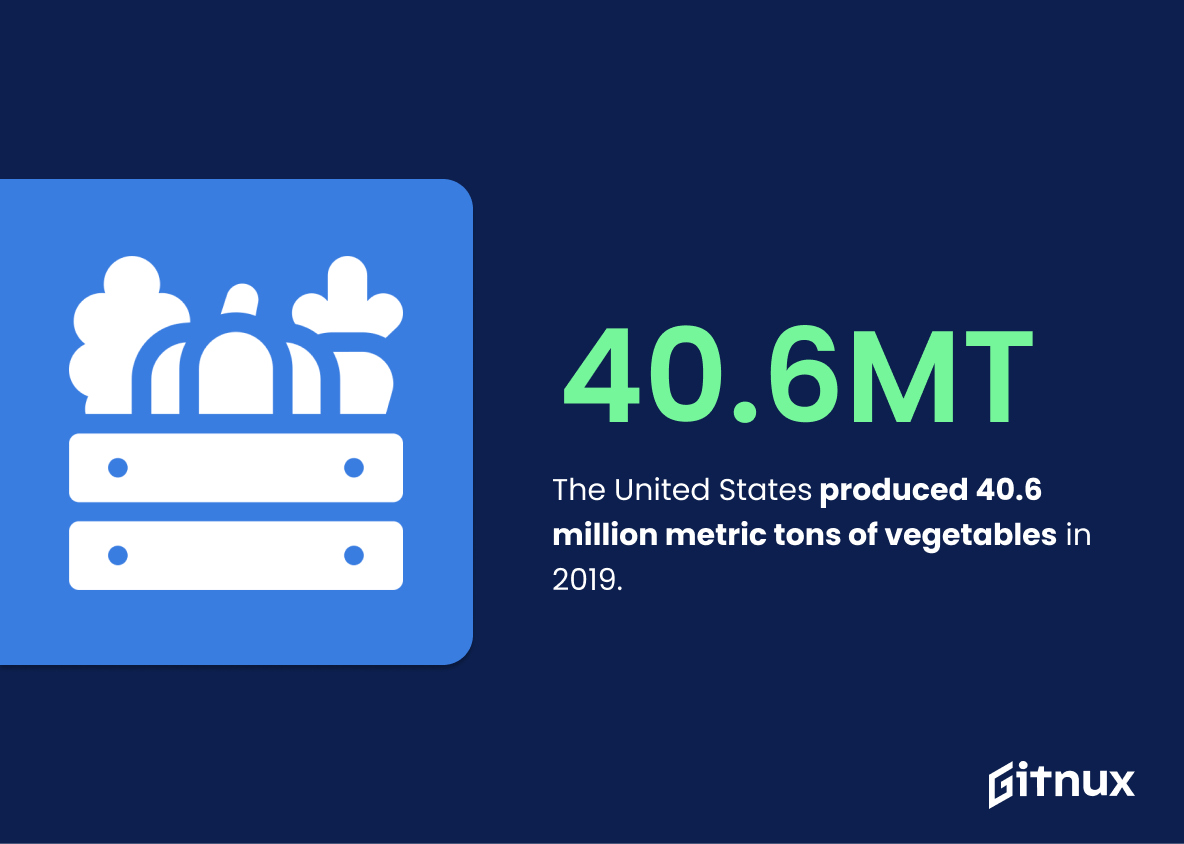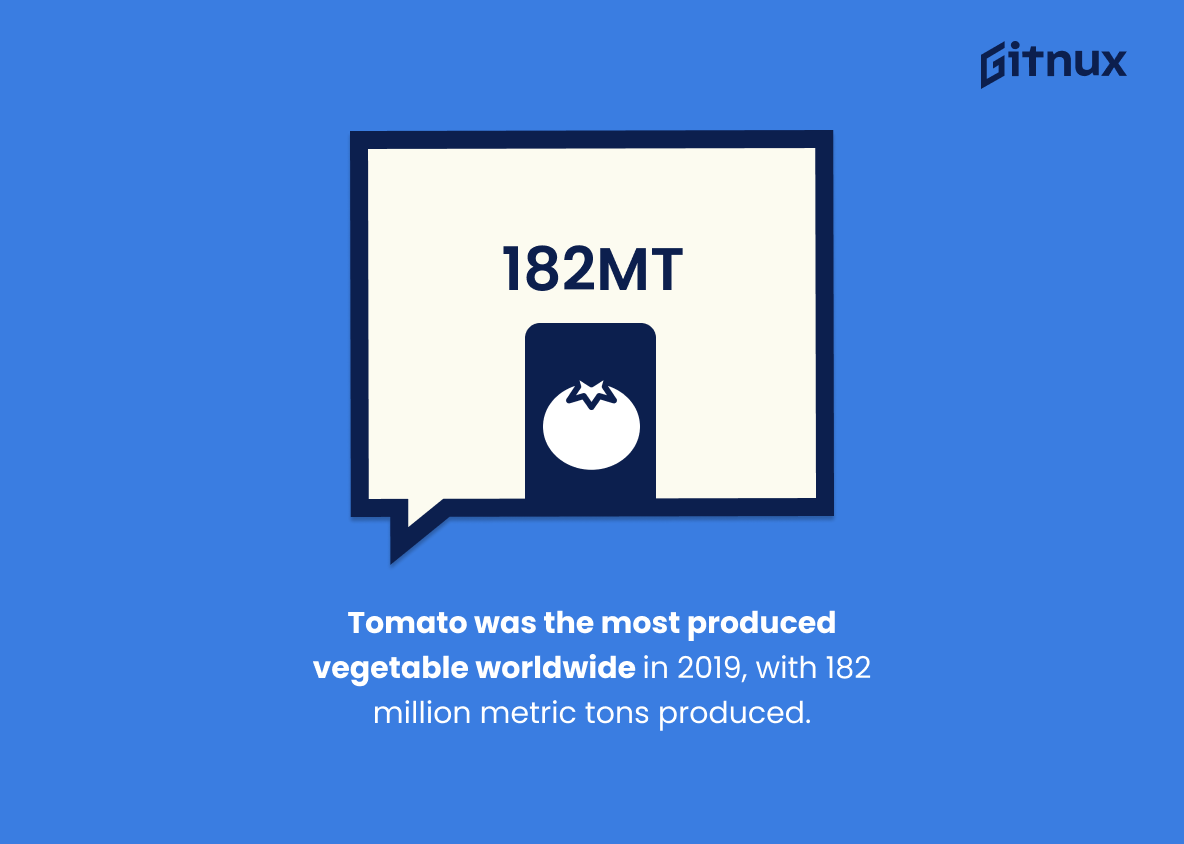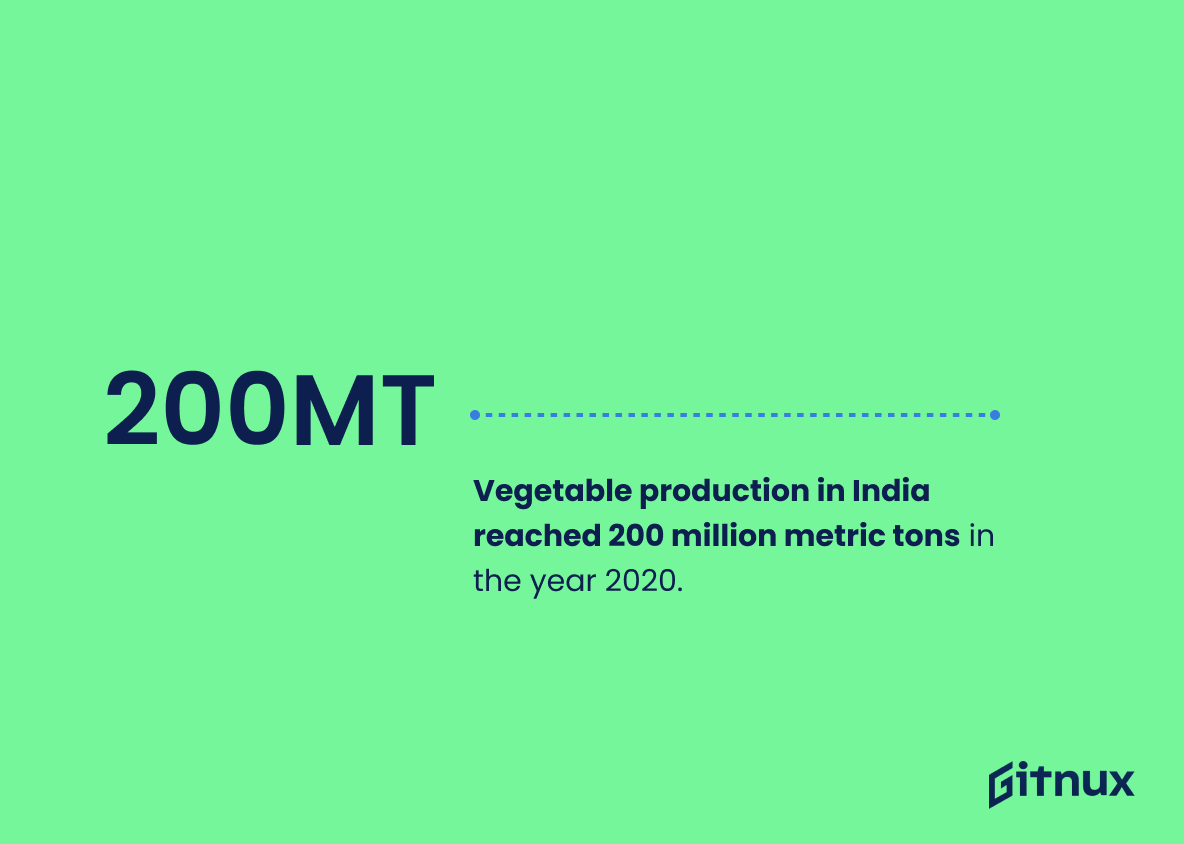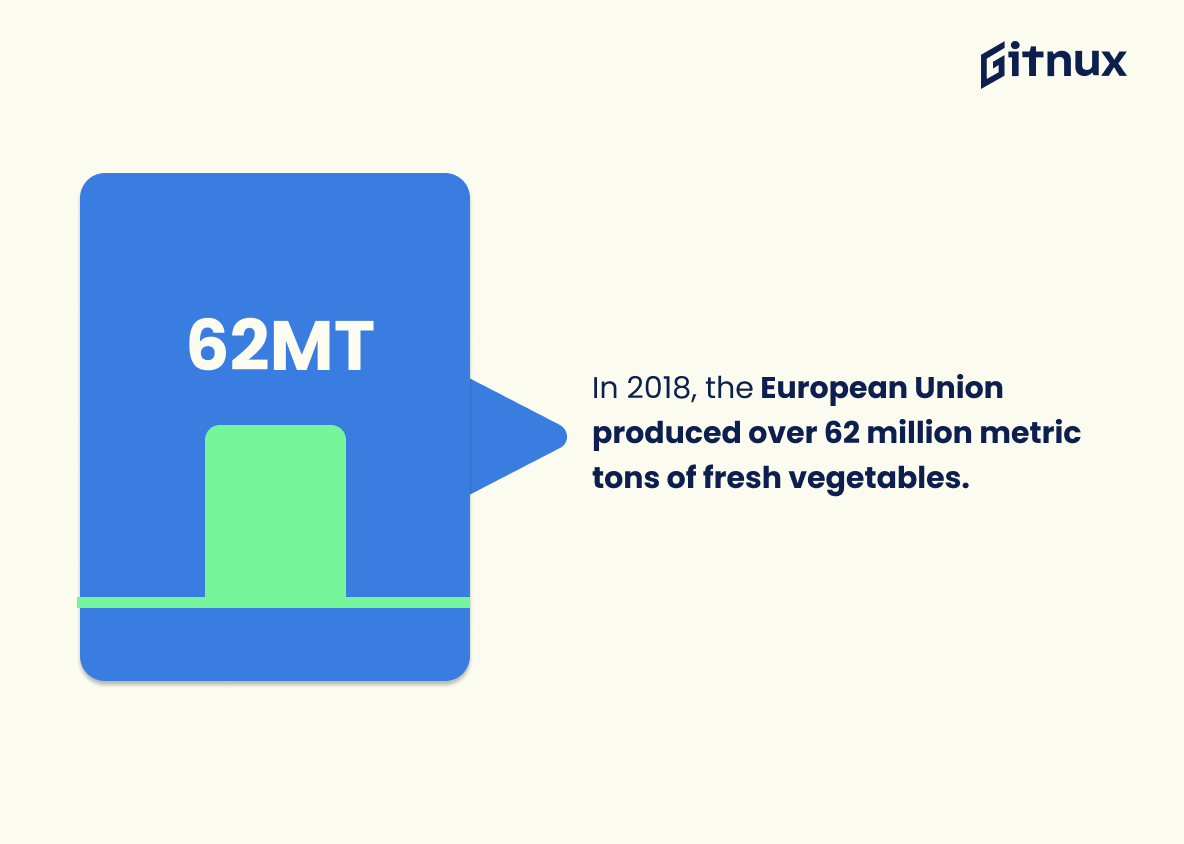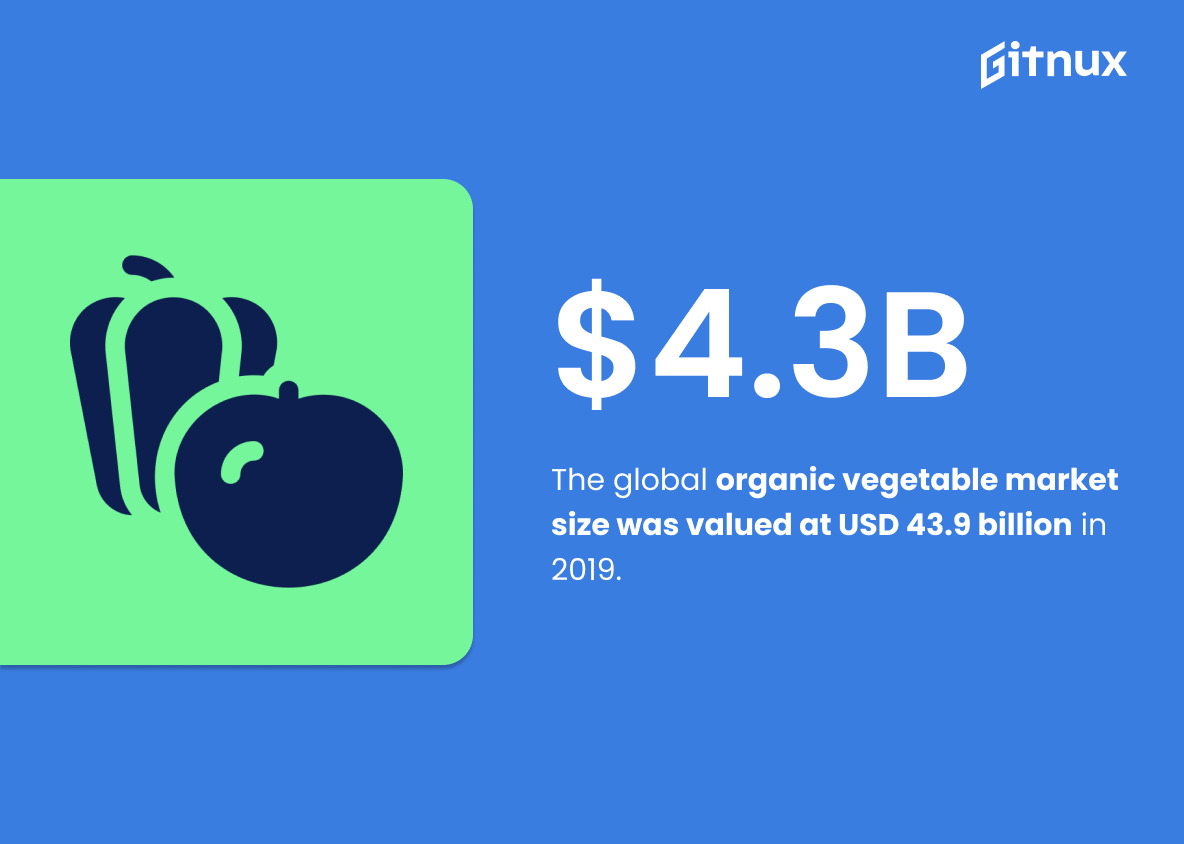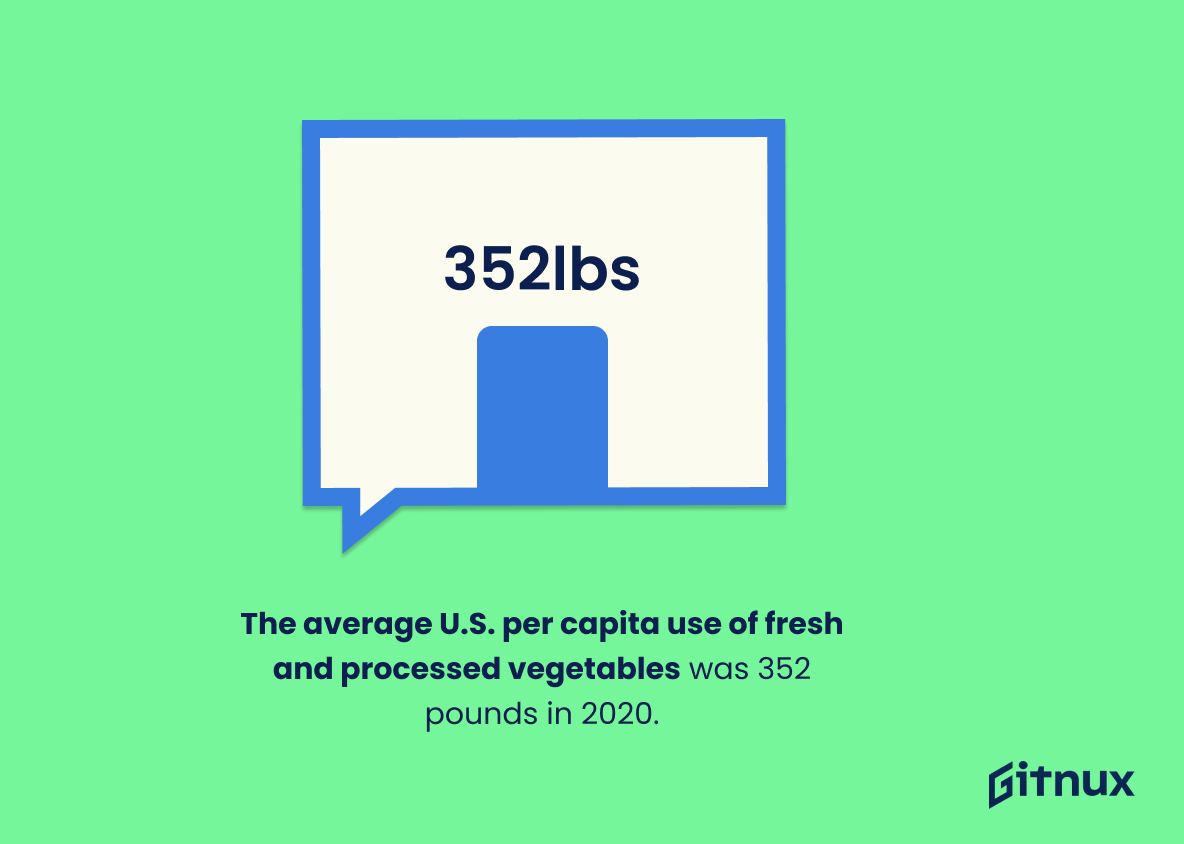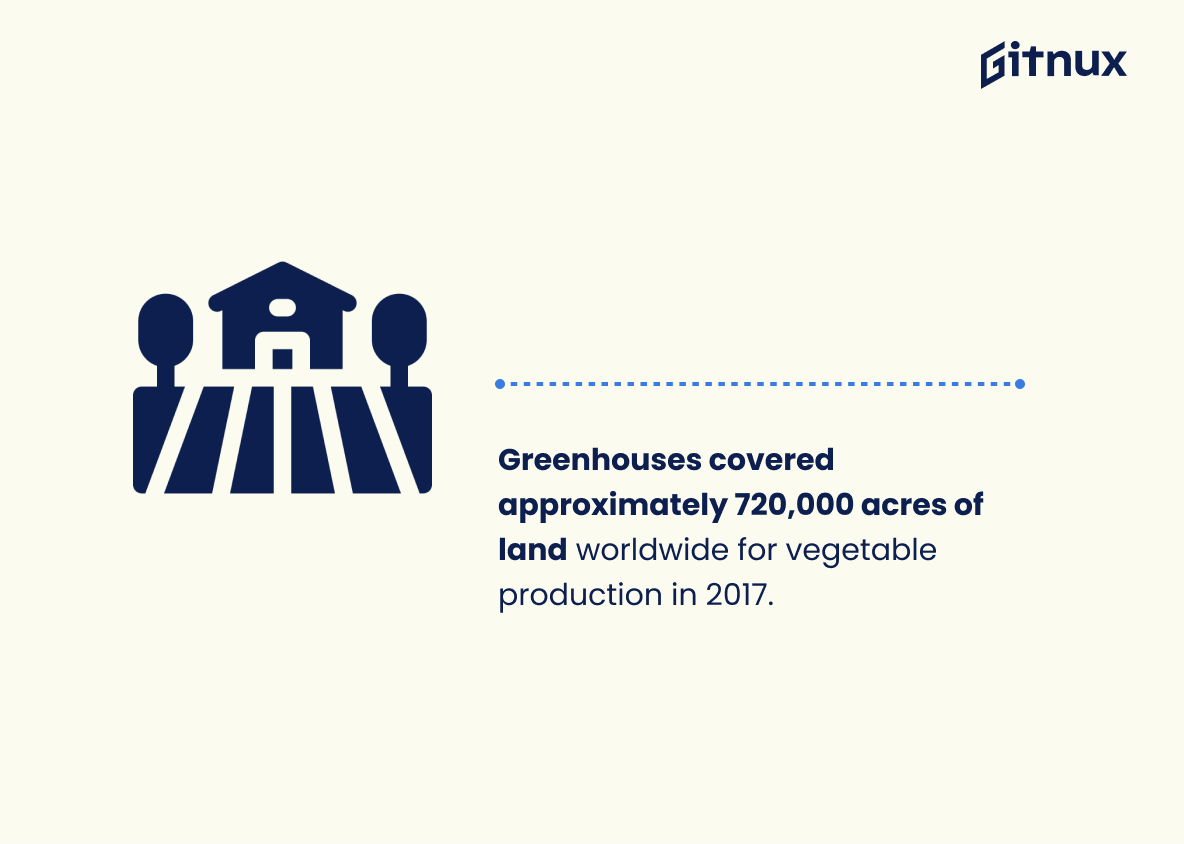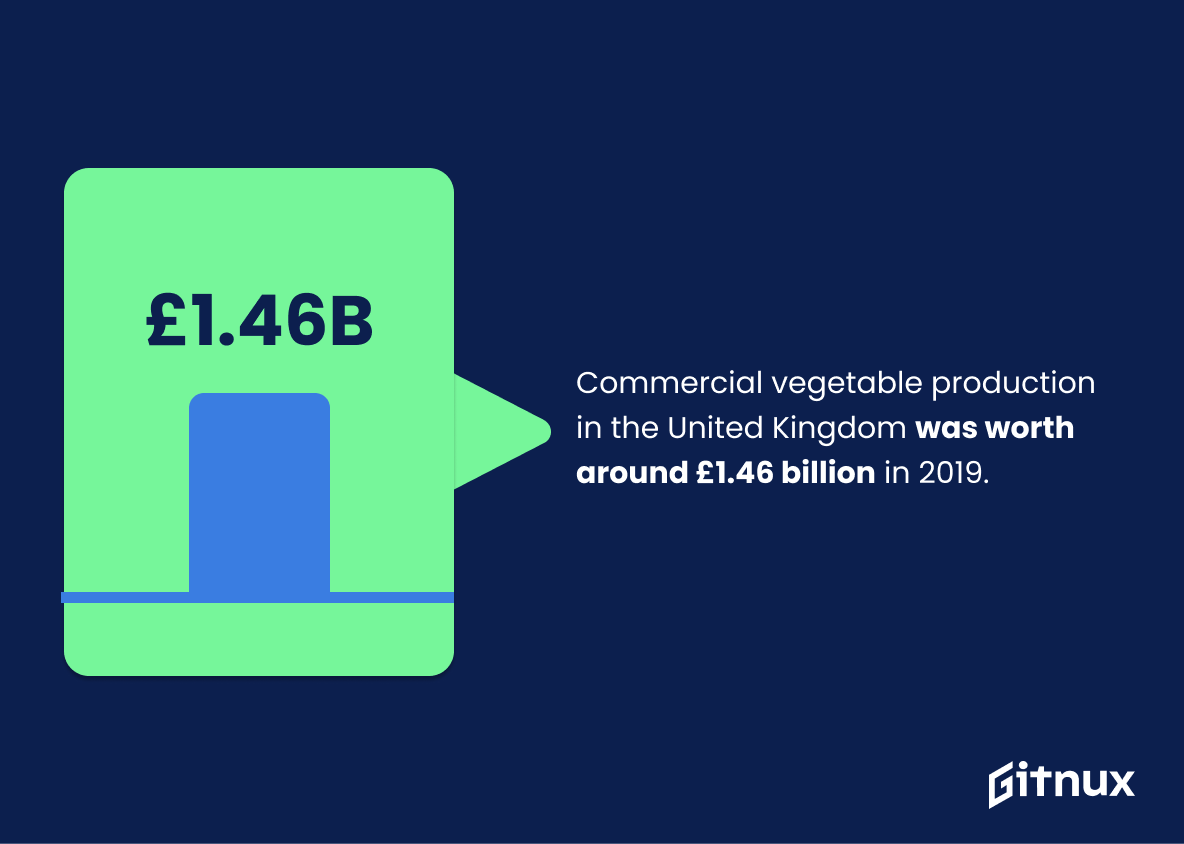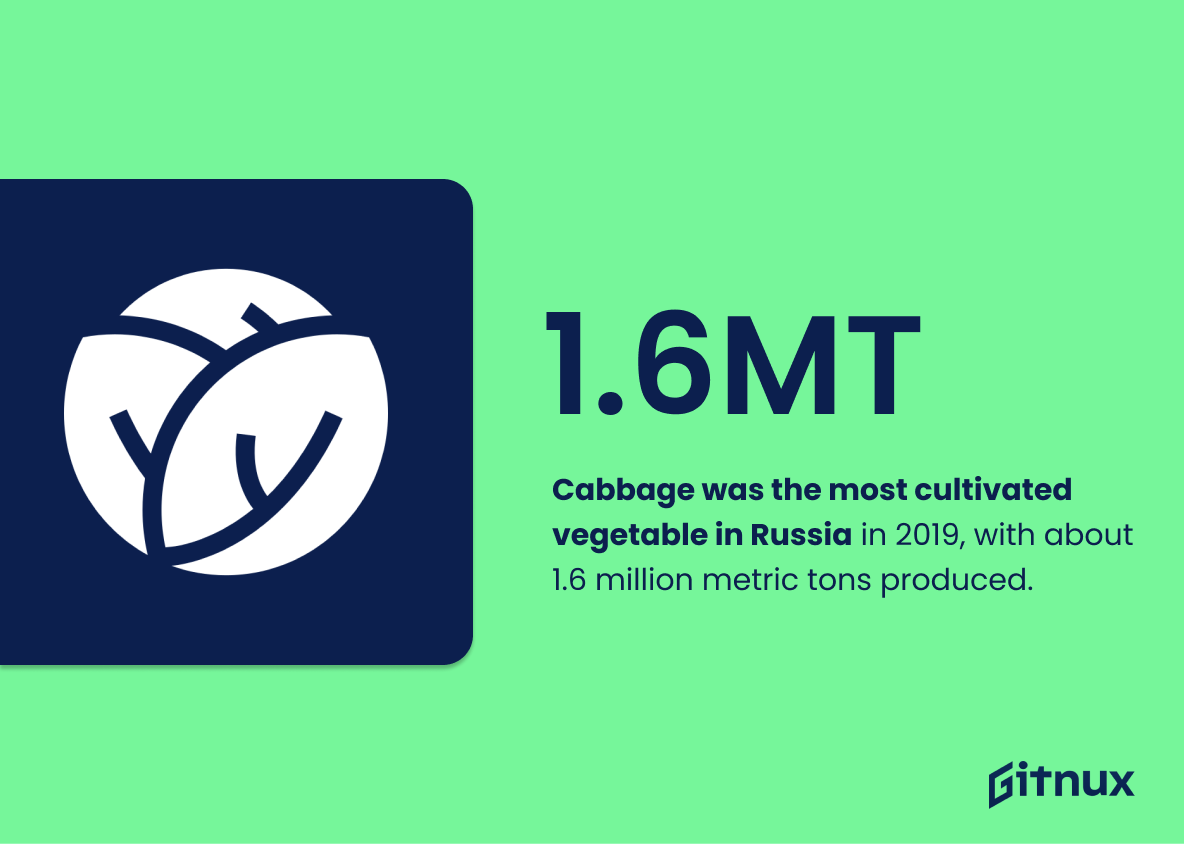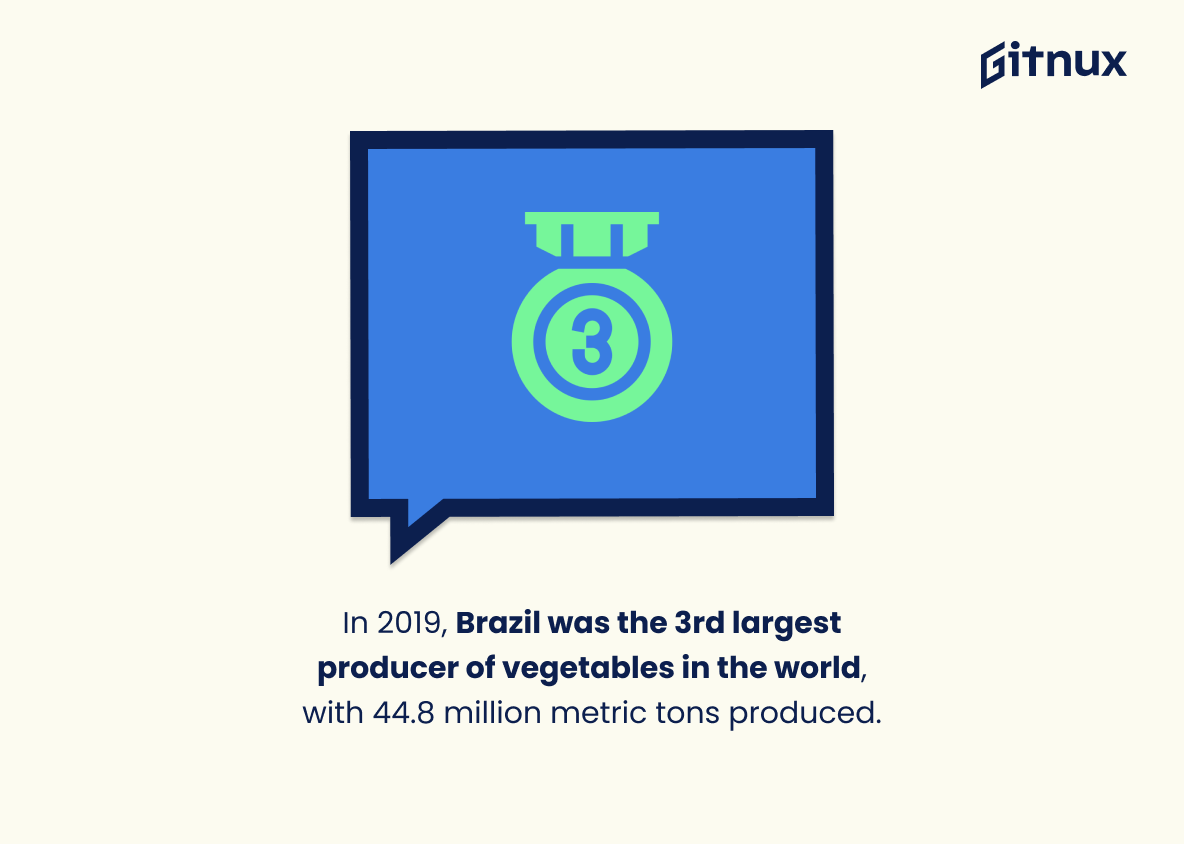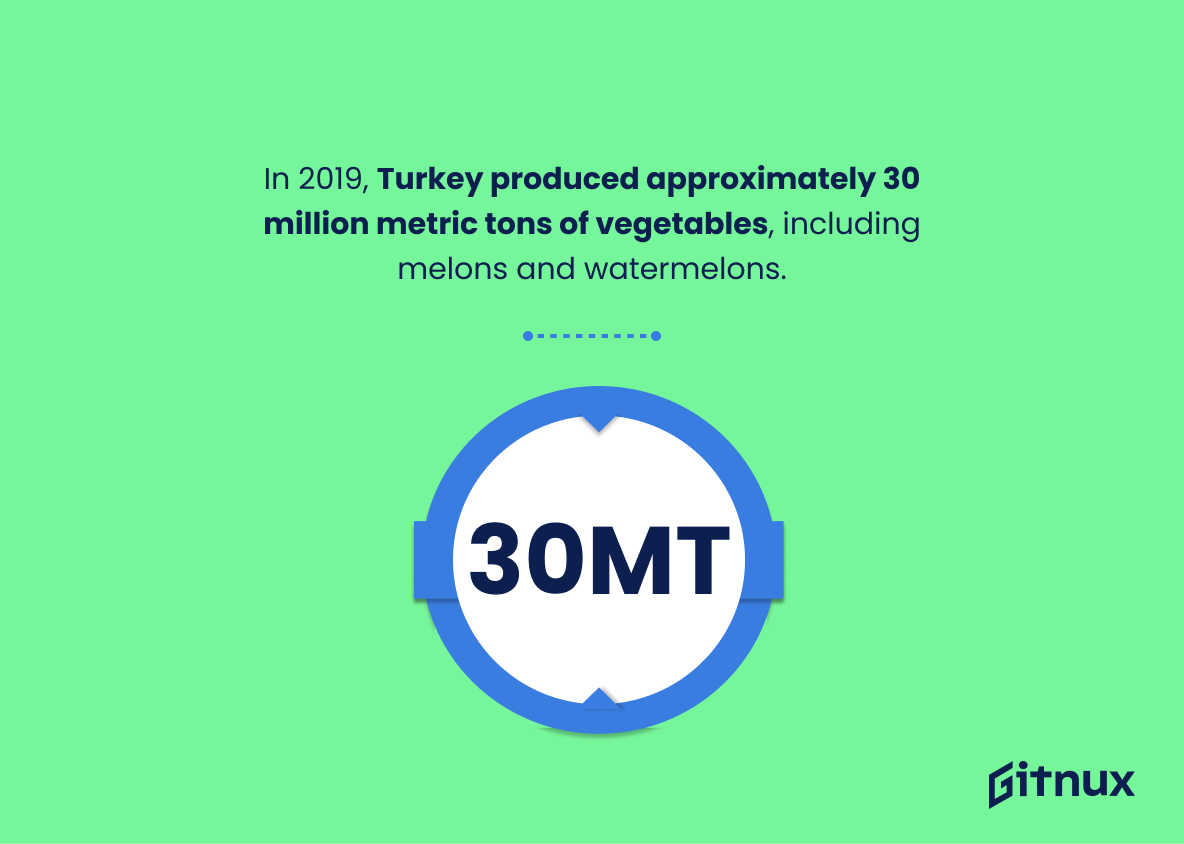Vegetables are an essential part of our diets, providing us with important nutrients and vitamins. In this blog post, we will explore the global vegetable production statistics from around the world. We’ll look at which countries produce the most vegetables, what types of vegetables are produced in each country, how much organic vegetable production there is worldwide, and more. From China’s 588 million metric tons to India’s 200 million metric tons to Mexico’s 329 billion Mexican pesos worth of value for their vegetable industry – these numbers paint a picture of just how vital vegetables are to our lives today. So let’s dive into some interesting facts about global vegetable production.
Vegetable Production Statistics Overview
The United States produced 40.6 million metric tons of vegetables in 2019.
This statistic is a testament to the sheer magnitude of vegetable production in the United States in 2019. It is a powerful reminder of the importance of vegetable production in the US economy and the impact it has on the lives of millions of people. It is a clear indication of the success of the US agricultural industry and its ability to produce a large quantity of vegetables for the nation.
Tomato was the most produced vegetable worldwide in 2019, with 182 million metric tons produced.
This statistic is a testament to the sheer magnitude of tomato production worldwide, highlighting the importance of this vegetable in the global food system. It serves as a reminder of the need to ensure sustainable production of tomatoes, as well as other vegetables, to meet the needs of a growing population.
Vegetable production in India reached 200 million metric tons in the year 2020.
This statistic is a testament to the incredible progress India has made in vegetable production. It highlights the hard work and dedication of the farmers and agricultural workers in India, who have worked tirelessly to increase the production of vegetables to such a high level. It also serves as a reminder of the importance of vegetable production in India, and how it contributes to the country’s overall food security.
In 2018, the European Union produced over 62 million metric tons of fresh vegetables.
This statistic is a testament to the impressive vegetable production capabilities of the European Union. It highlights the sheer amount of fresh vegetables that the EU is able to produce, demonstrating the strength of their agricultural industry. This statistic is an important part of understanding the current state of vegetable production in the EU and provides a valuable insight into the region’s agricultural output.
Spain is the largest vegetable producer in the European Union, representing 25.1% of the total EU production in 2018.
This statistic is a testament to Spain’s impressive vegetable production capabilities, highlighting their dominance in the European Union. It is a clear indication of the country’s agricultural prowess, and serves as a reminder of the importance of vegetable production in the region. This statistic is an invaluable resource for anyone looking to gain insight into the vegetable production industry in the European Union.
The global organic vegetable market size was valued at USD 43.9 billion in 2019.
This statistic is a testament to the growing demand for organic vegetables, indicating that the market for organic vegetables is thriving. It is a clear indication that the production of organic vegetables is on the rise, and that the industry is becoming increasingly profitable. This is an important piece of information for anyone interested in vegetable production statistics, as it provides insight into the current state of the industry.
The average U.S. per capita use of fresh and processed vegetables was 352 pounds in 2020.
This statistic is a telling indication of the importance of vegetable production in the United States. It shows that, despite the challenges of the pandemic, Americans still managed to consume an average of 352 pounds of fresh and processed vegetables in 2020. This is a testament to the hard work of vegetable producers and the dedication of consumers to maintain a healthy diet.
Greenhouses covered approximately 720,000 acres of land worldwide for vegetable production in 2017.
This statistic is a powerful indicator of the global reach of vegetable production. It demonstrates that vegetable production is a major industry, with greenhouses covering a vast area of land across the world. This statistic is a testament to the importance of vegetable production in the global economy, and serves as a reminder of the need to ensure that vegetable production is sustainable and efficient.
Commercial vegetable production in the United Kingdom was worth around £1.46 billion in 2019.
This statistic is a testament to the immense value of vegetable production in the United Kingdom. It highlights the importance of this industry to the UK economy and the potential for further growth. It also serves as a reminder of the need to ensure that vegetable production is sustainable and efficient in order to maximize its economic benefits.
Global vegetable production has increased by more than 50% since 2000.
This statistic is a testament to the incredible progress that has been made in vegetable production over the past two decades. It highlights the success of agricultural initiatives and the dedication of farmers to increase the availability of vegetables around the world. This is an important milestone in the effort to ensure that everyone has access to nutritious and affordable food.
Cabbage was the most cultivated vegetable in Russia in 2019, with about 1.6 million metric tons produced.
This statistic is a testament to the importance of cabbage in Russia’s vegetable production. It highlights the fact that cabbage is a major crop in the country, with a significant amount of production in 2019. This statistic is important to consider when discussing vegetable production statistics, as it provides insight into the types of vegetables that are being grown in Russia.
In 2019, Brazil was the 3rd largest producer of vegetables in the world, with 44.8 million metric tons produced.
This statistic is a testament to the impressive vegetable production capabilities of Brazil. It highlights the country’s ability to produce a large quantity of vegetables, making it a major player in the global vegetable production market. This statistic is an important piece of information for anyone interested in learning more about vegetable production around the world.
Green onion production in Japan reached 108,200 metric tons in 2019.
The fact that green onion production in Japan reached 108,200 metric tons in 2019 is a testament to the country’s commitment to vegetable production. This impressive figure highlights the importance of vegetables in the Japanese diet and the dedication of the nation to ensure that its citizens have access to a healthy and nutritious food supply.
In 2018, the total area under cultivation for vegetables in Nigeria was about 261 thousand hectares.
This statistic is a crucial indicator of the state of vegetable production in Nigeria. It provides a snapshot of the amount of land dedicated to vegetable cultivation, which can be used to measure the success of agricultural initiatives and identify areas for improvement. Additionally, it can be used to compare Nigeria’s vegetable production to other countries and regions, helping to inform policy decisions and investments in the sector.
In 2019, Turkey produced approximately 30 million metric tons of vegetables, including melons and watermelons.
This statistic is a testament to the impressive vegetable production capabilities of Turkey in 2019. It highlights the country’s ability to produce a large quantity of vegetables, including melons and watermelons, in a single year. This statistic is an important part of the overall picture of vegetable production statistics, and it provides valuable insight into the agricultural industry in Turkey.
The value of vegetable, legume, and pulse production in Mexico was approximately 329 billion Mexican pesos in 2020.
This statistic is a powerful indicator of the importance of vegetable, legume, and pulse production in Mexico. It demonstrates the sheer magnitude of the industry, and the economic impact it has on the country. It also serves as a reminder of the importance of investing in sustainable agricultural practices, as the production of these crops is essential to the health and wellbeing of the Mexican people.
Conclusion
The global vegetable production has seen a significant increase over the past two decades, reaching 1.5 billion metric tons in 2018 and continuing to grow since then. China is currently the largest producer of vegetables with 588.3 million metric tons produced in 2019, followed by India at 200 million metric tons and Brazil at 44.8 million metric tons that same year. Tomato was the most produced vegetable worldwide in 2019, while cabbage was Russia’s top crop for that year with 1.6 million metric tons grown domestically; green onion production reached 108,200 metric tons in Japan during this time as well. The organic vegetable market size was valued at USD 43.9 billion globally in 2019 and commercial vegetable production within the United Kingdom alone had an estimated value of £1
References
0. – https://www.www.tuik.gov.tr
1. – https://www.www.ers.usda.gov
2. – https://www.www.ibef.org
3. – https://www.ec.europa.eu
4. – https://www.nigerianstat.gov.ng
5. – https://www.www.statista.com
6. – https://www.www.e-stat.go.jp
7. – https://www.ourworldindata.org
8. – https://www.www.grandviewresearch.com
